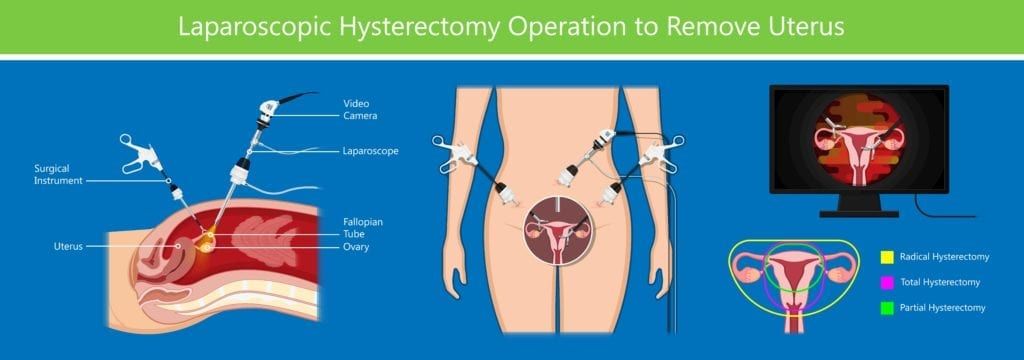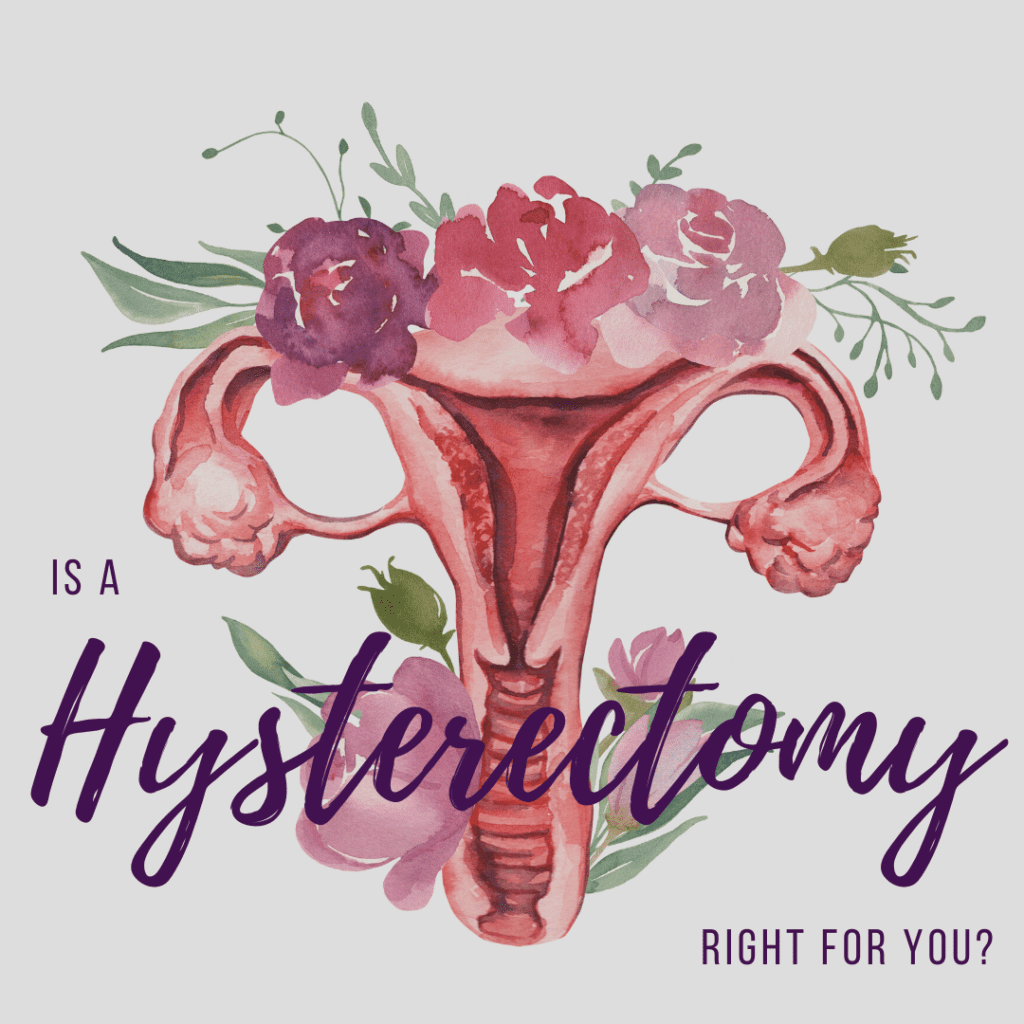Did you know that a hysterectomy is the second most commonly performed surgery on women? As many as 500,000 women in the United States have hysterectomies each year. A hysterectomy is a surgical procedure used to remove the uterus. In some cases, the fallopian tubes and ovaries can also be removed.
There are a few different types of hysterectomies, depending on what structures are removed. A subtotal or supracervical hysterectomy is when the upper part of the uterus is removed, but the cervix remains in place, while a total hysterectomy removes both the uterus and the cervix. A radical hysterectomy, often performed when cancer is present, removes the uterus and surrounding tissues, the cervix, and the top of the vagina. The removal of the ovaries is known as a oophorectomy and the removal of the fallopian tubes is known as salpingectomy. When the ovaries and fallopian tubes are removed with the uterus this is known as a hysterectomy and bilateral salpingectomy-oophorectomy.

Hysterectomies are surgically performed in one of three ways: as an open surgery, laparoscopically, or with robotic assistance. Open surgery, also known as an abdominal hysterectomy is when a 5-7 inch incision is made in the abdomen and used for the removal of the uterus. A laparoscopic hysterectomy is when several small cuts are made in the abdomen and the entire surgery is performed through these small holes. Finally, robotic assisted laparoscopic hysterectomies are performed with the use of a surgical robot.
A hysterectomy may be right for you if you have any of the following conditions:
Adenomyosis
This is a condition where the lining of the uterus actually grows into the muscle tissue of the uterus and causes the uterine wall to thicken. Some cases can be treated with hormone therapy and pain medication to alleviate the pain and heavy bleeding. Although adenomyosis resolves itself after menopause, some women with severe symptoms may require a hysterectomy.
Cancer
If you have cancer of the uterus, ovary, cervix, or endometrium, a hysterectomy may be recommended as a way to treat the cancer and prevent it from spreading. However, this depends on the severity and type of the cancer, as well as your overall health. Around 10% of hysterectomies are performed due to cancer.
Delivery Complications
In some cases, delivery complications during both a vaginal or cesarean birth can lead to a hysterectomy. However, this is rare and generally only happens as a lifesaving measure.
Endometriosis
This condition is characterized by the endometrium (inner lining of the uterus) growing outside the uterus. As a result, endometriosis causes severe menstrual pain and can cause infertility. Although some cases can be treated with hormone therapy and certain medical procedures, a hysterectomy may eventually be recommended.
Uterine Fibroids
These are noncancerous growths made of fibrous tissue that grow in the uterus. Fibroids are associated with heavy bleeding and severe menstrual pain. In some cases the fibroids can be removed and the uterus can be left intact. However in cases where the fibroids continue to grow back and cause pain, a hysterectomy may be recommended.
Uterine Prolapse
Uterine prolapse is when the tissues and muscles supporting the uterus have weakened, causing the uterus to slip down into the vagina. Some cases of uterine prolapse can be treated with a pessary or by repairing the weakened tissues. If these options fail or if the degree of prolapse is severe, a hysterectomy may be recommended instead.

Dr. Geoffrey Zann is a Certified Robotic Da Vinci Surgeon, Board-certified by the American College of Obstetricians and Gynecologists, and a Diplomat of the American Board Obstetrics of Gynecology. He has been a member of the American Society for Colposcopy and Cervical Pathology, American Association of Gynecologic Laparoscopists, and the Hugh R. K. Barber Obstetric and Gynecologic Society.
